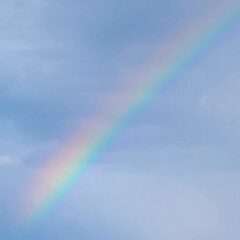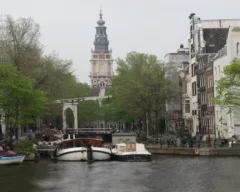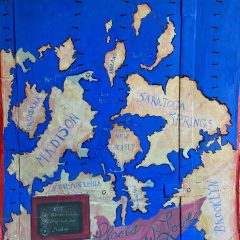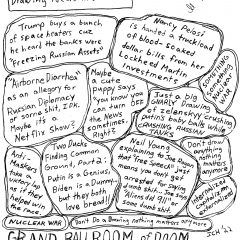[Andrea reports from Berlin on a group show centering around political unrest in Ukraine; though some works have a lighthearted touch, their undercurrent remains somber. — the Artblog editors]
The most compelling exhibition I saw last month in Berlin was at the gallery of DAAD (Deutscher Akademischer Austauschdienst), the German Academic Exchange. The Ukrainians (May 24-June 21, 2014), curated by Bettina Klein, was art from the front lines by a group of artists well-aware of the possibilities and limits of art in the midst of serious, political unrest.
Symbolizing state rhetoric
Many of the artists spent time protesting with the crowds at Maidan Nezhalezhnosti (Square of Independence), the central square of Kiev. Some of their work bore witness, recording individuals they met and events they observed. Other work examined the role of verbal and visual rhetoric as employed by the state. The exhibition was accompanied by three public discussions about artistic interventions during the Maidan protests and in Eastern Ukraine, new forms of documentary, and the Ukrainian cultural and linguistic landscape.
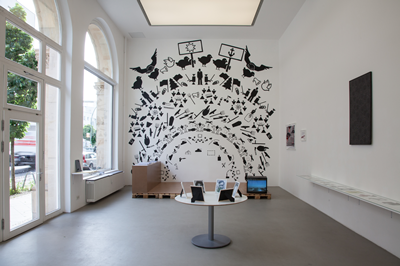
An entire wall opposite the entrance was covered with pictograms by R.E.P. (Revolutionary Experimental Space), a collaborative group that formed during the Orange Revolution of 2004. R.E.P.’s array of icons forms “Patriotism Chronology” (2014), employing invented but plausible images, consistent with the public information symbols of the International Organization for Standardization, which are commonly used to indicate taxi stands, hospitals, elevators, etc. They propose an ironic symbology, presumably universally comprehensible, used to rewrite the national myths of the current Ukraine.
The range of pictograms and their subjects give some idea of the exhibition’s tone: the word “action” is shown as a hand grasping something (a rock?); “ancestor” is indicated by a gorilla; “prosperity” by a dressed chicken (have citizens everywhere been offered “a chicken in every pot”?); “progress” by a hand axe of Neolithic style; “competition” by a tadpole; “conformity” by a nut and bolt; “manipulation” by a television remote; “exploitation” by a whip; and “protest” by a pitchfork.
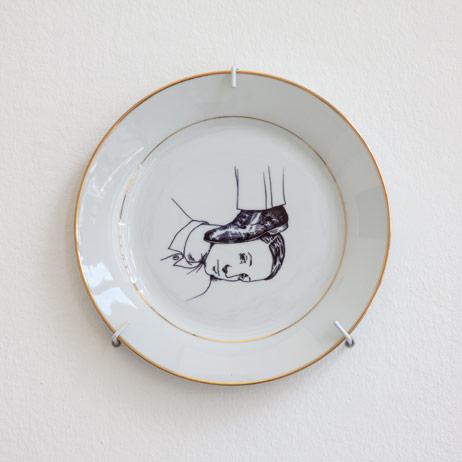
Another work involving public use of visual imagery was Nikita Kadan’s “Procedure Room” (2009-10). Eight gilt-edged porcelain plates, hung as decorative objects, featured line drawings in the manner of the People’s Medical Dictionary of the Soviet era, in which patients were depicted as calm, despite undergoing painful procedures.
Kadan’s plates illustrated forms of torture, and made for difficult viewing: a man rectally violated with a stick, fingers intentionally crushed in a door, a person burned with matches. The artist explained, “The didactic character of these drawings calls upon the collective responsibility of those who remain silent even though they know something is happening. The individual’s body is at the mercy of professionals in uniforms: the doctor knows what he is doing–and it’s always what’s best for us.”
Prolonging the spirit of protest
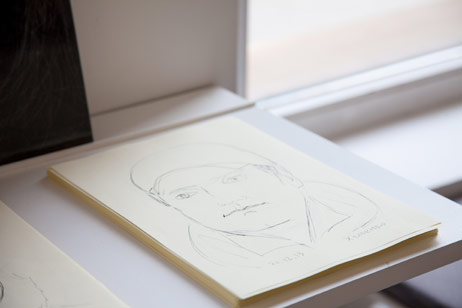
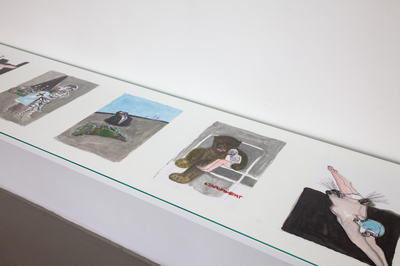
Lesia Khomenko’s “Drawing on Maidan” (2013/14) was a record of her presence, and that of other, specific individuals, at the Maidan protests. She sketched portraits of those around her, giving the drawings to each person and retaining a carbon copy.
Vlada Ralko’s “Kiev Diary” (2013/14) showed a range of incidents from the protests, including people in costumes (which some were actually wearing at the political events), as well as costumes used as disguises by the police and criminals. A man was shown submerged in a black mass, which could have been soil, sea water, or oil; in any case, it raised the specter of death.
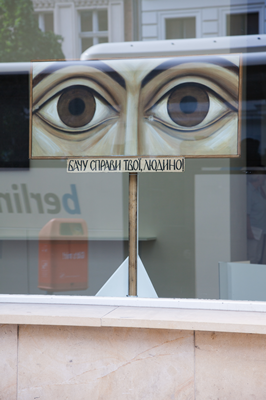
Oleksandr Melnyk, a traditional artist who paints primarily religious and historical subjects, created a painting of two eyes in the style of a religious icon. From the time the protests began at Independence Square, Melnyk showed up with the painting, held like a placard above the crowd in symbolic witness. Beneath the eyes, he wrote, “I see what you are doing.” The reverse of the painting says, “You are wonderful. I love you.” He held the work aloft for months, and when the situation became violent, both he and the painting were hit by rubber bullets.
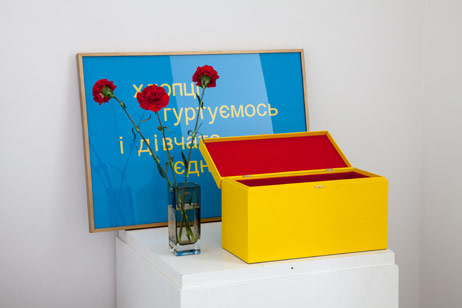
An installation by Boris Mikhailov and Fast Reaction Group had been shown in 1994 as part of the exhibition Alchemic Surrender. “Three Letters” is as pertinent to the current political situation as it was 20 years ago. The title refers to three letters specific to the Ukrainian alphabet that are not part of the Russian alphabet.
A video running on a monitor documented a series of interactions the Fast Reaction Group had with administrators in various public institutions: a police office, a hospital, a temple. They proposed that each building have an altar, dedicated to Ukrainian patriotism, which would hold a group of objects, including a box with the three letters. During the Soviet era, public buildings commonly had “red corners,” dedicated to Communism, and many Ukrainians traditionally had religious altars at home.
While the video was obviously satirical, commenting on the ease with which some functionaries were willing to switch allegiance to whomever was in power, it contained a poignant truth about society’s desire for common values and rituals that celebrate them–a function once performed by religion but now assumed by political interests.
The other artists in the exhibition were Zhanna Kadyrova, Volodymyr Kuznetsov, Yuri Leiderman, Lada Nakonechna, and Mykola Ridnyi.
The Ukrainians was on view at DAAD through June 21, 2014.


